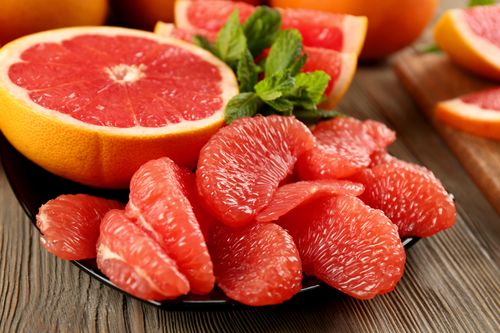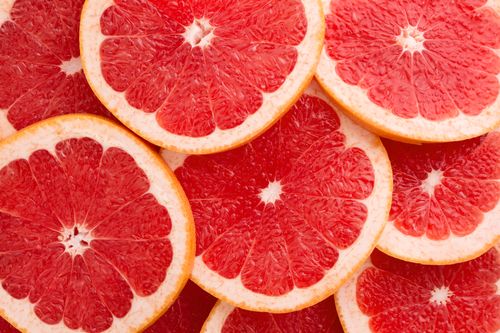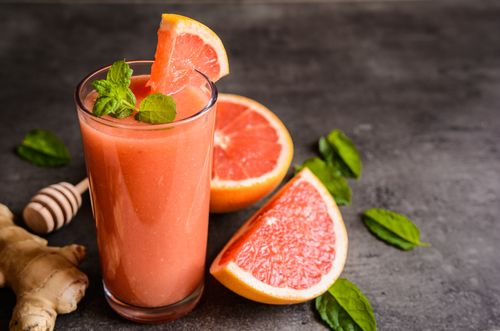Grapefruit: Why You Must Consume this Magical Fruit?
Grapefruit, unlike its sweeter counterparts, contains a tangy taste that is acquired gradually. A combination of orange and pomelo, grapefruits are sodium-free, cholesterol-free, gluten-free, and fat-free. Also, with only one serving of a grapefruit, you could fulfill about 64% of your daily Vitamin C needs.
Cultivated extensively in Assam, Kerala, Bangalore, and Tripura at an altitude of 1500 metres, grapefruits come in different colours and sizes. They range from white, pink, or ruby on the inside, and are often as big as your fist. The fruit is believed to have several nutritional benefits and has been proven significant in reducing weight or blood glucose levels if added as a constant part of the daily diet.
Nutritional composition
The National Institute of Nutrition in India states that a grapefruit has 92% moisture, and is a low carb fruit, with only 13 grams in a half grapefruit, which also comes from natural sugar in the fruit. Due to its high moisture content, a grapefruit is a great choice to have on a sunny day, and can be added to the first meal of the day for a fresh and hydrating start.
Other than carbohydrates, a 100g serving of a grapefruit gives you:
- 31.2mg Vitamin C
- 0.77g Protein
- 0.14g Fat
- 1.70g Dietary Fiber
Season
The harvesting season for grapefruits starts from September until December in many parts of the world. However, they are easily accessible around the year in stores. Grapefruits that are fresh and healthy to consume are bright in color, firm, and do not have wrinkles.
Health Benefits
#1 Boosts Immunity
Grapefruits have Vitamin A, B and C, zinc, copper, and iron, which all work together in the body to boost the immunity system. They additionally help in maintaining the integrity of the skin, which is our first and foremost shield against infection.
#2 Treats Heartburn
The citrus extract content in the grapefruits makes a good post-digestion antacid. This fills in as a crucial cure against cold, cough, or flu. The ‘naringin’ present in pith helps keep the digestion process in place.
#3 Aids Weight Loss
Individuals who eat an adequate portion of grapefruit, or drink its juice before their meals lose their weight faster than those who don’t. Grapefruit has a great deal of nourishment and water content in it, instead of empty calories. So, it’s an incredible choice to add it to your meal to support your adherence to a high-nourishment, low-calorie diet.
#4 Prevents Diabetes
Eating grapefruits, which range moderately on the glycemic record scale, can help control insulin levels in the body and prevent it from having type-2 diabetes. Adding more blueberries, grapes, apples, bananas, and grapefruit to the diet help in reducing the chances of type-2 diabetes, since there is a huge heterogeneity in the relationship between them and type-2 diabetes.
#5 Promotes Heart Health
Consistently devouring grapefruit helps in keeping the heart healthy by decreasing risks of coronary illness, for example, hypertension and cholesterol. Grapefruit is high in potassium, a nutrient liable for maintaining the heart’s wellbeing. The fibre content in grapefruit may likewise also keep the heart healthy, given that a high fibre diet is related to lower BP and cholesterol levels.
High in antioxidants
Antioxidants shield your boy from harm brought by free radicals in your body. Grapefruits contain a range of antioxidants that may help in preventing the advancement of these radicals into an ailment, including coronary illness, or even cancer. Some of them are:
- Vitamin C
- Beta-carotene
- Lycopene
- Flavanones
Apart from these, there is a lot of research that effectively helps conclude how grapefruits can help in:
#1 Improving vision
Vitamin A, present in grapefruit in the form of beta-carotene, is significant for our vision. Studies suggest that it likewise plays a role in delaying age-related macular degeneration (AMD). Consuming grapefruit and hence, vitamin A, vitamin C, and other nutrients, can decrease the chances of progressing to AMD by 25%.
#2 Heals wounds
Vitamin C is vital for wound healing in the body. The natural process of tissue repair and wound healing becomes even faster due to the presence of vitamin C supplementation.
#3 Controls Appetite
Studies suggest that including fibre-rich organic products in diet can give a filing sensation for the long haul. This is on the grounds that fibre eases back the rate at which your stomach digests, expanding its processing time.
Grapefruit recipes to try
Since it’s already been established how beneficial a grapefruit is to your diet, here are different ways in which you can consume it:
- Grapefruit Smoothie – Blend a frozen banana with Greek yogurt and grapefruit slices. Add some vanilla extract and serve with sliced almonds and grapefruit pieces.
- Grapefruit-Ginger-Chia Pudding – Mix coconut milk, cashews, chia seeds, freshly chopped ginger, vanilla extract, and some maple syrup, and keep it in a refrigerator for 4-6 hours. Add grapefruit slices on the top of it to complete your breakfast meal.
- Grapefruit Juice – The easiest and the most common grapefruit recipe is grapefruit juice. You can simply blend the slices in a juicer. You can also add a few more fruits like apple or carrots to increase the flavour as well as health benefits.
- Grapefruit Salad – Add grapefruit with some apple slices on a platter; add pomegranate, mint, and mixed greens, and add chillies and salt to taste. Mix lemon juice, and a spoonful of honey in a bowl, and pour it all over the salad. Your fresh bowl of health is ready for you!
- Grapefruit detox water – Citrus fruits such as oranges, grapefruit, tangerines, and mandarins taste amazing in water, and can be your go-to detox water on days you feel bloated. You can switch some of the fruits with basil or mint to give it a refreshing taste.
It is obvious that the grapefruits are one of the most delightful citrus fruits available near you. Not only are they rich in vitamins and minerals, they are also great in taste, and can be combined with different food items to make a variety of dishes.
Frequently Asked Questions (FAQs)
A. Grapefruit comes in a variety of colours, such as pink, white, and ruby red. While ruby red is the most commonly available kind, they are all known for their citrus taste and splendid shades of yellows and reds. As far as calories and macronutrients are concerned, the sustenance profiles are comparatively the same for all of them.
A. When shopping or grapefruits, search for one that has no green colour on its outer covering. Do not pick those that can be easily squeezed. Also, avoid those grapefruits that have tight or wrinkled skin. A grapefruit that is heavier to hold is your ideal choice. Grab one and check if it’s heavier than it looks.
A. Grapefruit can be easily frozen; however, it is recommended to store sliced grapefruit than the whole fruit in the freezer compartment. Keep the slices in an airtight container, and they are good to be used for a while. A properly sealed, frozen grapefruit should remain useful for as long as a year.
A. According to the American Heart Association report, eating grapefruit, which is rich in specific flavonoids, regularly may bring down the risks of a heart stroke.
A. The NHS suggests that a whole grapefruit or grapefruit juice should not be consumed with specific medications, as it has resulted in increased blood levels of the medication. Some of the common drugs to avoid eating with grapefruit are statins, calcium channel blockers, immunosuppressants, certain cancer drugs, and Entocort, which is used to treat Crohn’s sickness. However, the list is not limited to these, and must be discussed with your GP before consumption.



